On February 20 Kabul was relatively calm and a light blanket of snow lay upon the building that houses Afghanistan’s National Archives.
Once a palace, the building is one of the finest in the city.
It is located in an area known as the Bagh-i-Charmgari (‘Tanners’ Garden),
and it sits at the foot of Asmayee Mountain.
The palace was constructed in 1892 by Amir Abdul Rahman, for his son Sardar Habibullah Khan.
The Sardar admired the architectural style of British cantonments in India and the palace was designed to suit his tastes.
The interior is relatively austere, except for the ceilings which are panelled with floral motifs.
In the past the building has served as a military academy and a barracks. For a while it was in ruins, but was restored in the 1970s. Afghanistan’s national archives were moved there in the late 1970s, and miraculously the building and its holdings escaped damage in the following decades. Now the archives are stored in the basement and the main public areas are used as exhibition spaces.
One of the works on display was a copy of a magnificent example of Kufic calligraphy.
The accompanying label describes it as a gift from the USSR to King Amanullah Khan; the original is in ‘Leningrad’.
For me the Archives’ greatest surprise lay in its extensive collection of Pahari and Rajasthani miniatures.
There is no explanation of how these Indian paintings had come into the Archives’ possession.
And the labeling is not helpful.
As is common with Pahari and Rajasthani miniatures, many of the paintings have Hindu themes.
And some could even be described as amorous.
The Archives’ brochure is silent on the subject of these miniatures, although they are of immense value.
The collector who acquired them was evidently a conniosseur of Indian painting. Who was it? I wondered, and an answer was suggested by Prince Mostafa Zaher, who is a member of the erstwhile royal family.
The prince was born in Kabul’s royal palace which is now the residence of President Karzai. He went into exile with his grandfather, Zahir Shah, the last king of Afghanistan, in 1973.
Prince Mostafa was with Zahir Shah when he returned to Kabul in 2002 and was by his bedside when the ‘father of the nation’, as he was then known, died in 2007.
Mostafa Zaher now occupies a position in the government; he is also an excellent raconteur and has many interesting stories to tell of the family’s life in exile and their eventual return to Afghanistan.
He told me that his great grandfather King Nader Shah (Zahir Shah’s father) was born in India, in Dehra Dun (where I myself went to school).
There are several pictures of King Nader Shah in the National Gallery in Kabul. In this one he is the bearded figure in the centre. He is pictured with his son, the future king Zahir Shah, who is dressed like an English schoolboy.
Here his portrait is on the far left, looming over the shoulder of one of the gallery’s curators.
Perhaps it was in Dehra Dun that the young Nadir Shah developed a taste for miniatures?
Elsewhere in the archives there is a display on recent Afghan history.
Mohammad Najibullah Ahmadzai, the leftist, Soviet-allied President of Afghanistan (generally known as ‘Najib’ or ‘Najibullah’) is prominently featured.
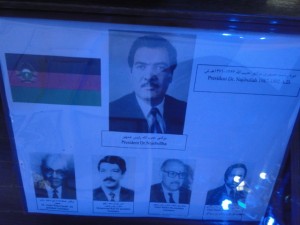 Najibullah was in the UN compound in Kabul in 1996 when the Taliban laid siege to the city. Ahmad Shah Massoud, the revered Tajik leader, offered to help him escape even though he was his political enemy. But Najibullad refused to flee and insisted on remaining in the city. On Sept 27 1996 the Taliban broke into the UN compound: they castrated Najibullah and hung him from a lamp-post. The lamp-post still stands, right opposite the presidential palace.
Najibullah was in the UN compound in Kabul in 1996 when the Taliban laid siege to the city. Ahmad Shah Massoud, the revered Tajik leader, offered to help him escape even though he was his political enemy. But Najibullad refused to flee and insisted on remaining in the city. On Sept 27 1996 the Taliban broke into the UN compound: they castrated Najibullah and hung him from a lamp-post. The lamp-post still stands, right opposite the presidential palace.
Now, sixteen years later, there is a growing respect for Najibullah. This display is perhaps a sign of changing perceptions of this period.
On one of the gallery’s walls hangs a poster that evinces a nostalgia for another time: it features pictures of King Zahir Shah and other Afghan leaders with world figures like John F. Kennedy. It bears the wistful legend: ‘Good relations with neighbouring and other foreign countries.’
Prof Sakhi Muneer is the head of the Archive and a well-known media personality.
I asked him how the Archives had fared under the Taliban and he said that it had suffered no harm. ‘Some of the Taliban,’ he added, ‘were cultured persons.’
The director of the Archives under the Taliban was Mullah Jamal Shah.
What did Mullah Jamal Shah make of the Rajasthani and Pahari miniatures? How did the paintings survive the iconoclastic furies of a period that saw the destruction of the Buddhas of Bamiyan?
On inquiring about this I was told by many Afghans that the furies that destroyed the Bamiyan Buddhas were not indigenous. In Afghanistan many different tribal and ethnic groups have lived side by side for thousands of years. This is a country that had once straddled the Silk Route; its inhabitants have long known that ‘the world is wide’. The destruction of the Buddhas was neither initiated nor executed by Afghans; nor was it the result of a spontaneous local upheaval. It was the result of a project that was conceived and executed by foreign zealots. Many Afghans were horrified by the destruction; they too understood that it represented a turning point in their history.
As for the Indian miniatures, it was the Archives’ Afghan staff who preserved and protected them. For all I know Mullah Jamal Shah may himself have encouraged their concealment.


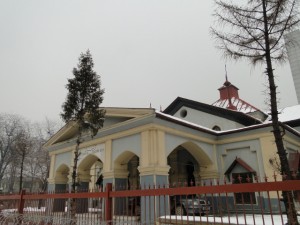


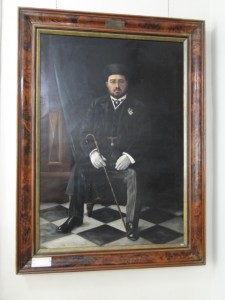
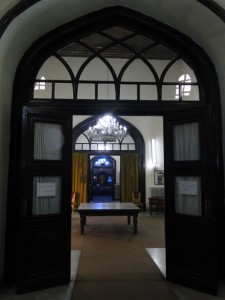
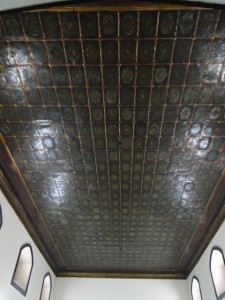
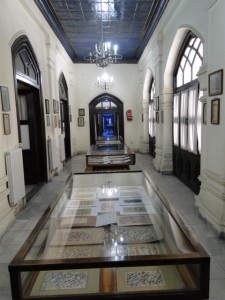
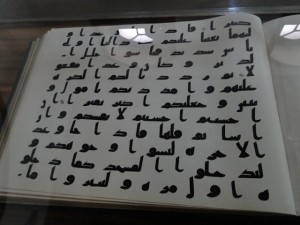
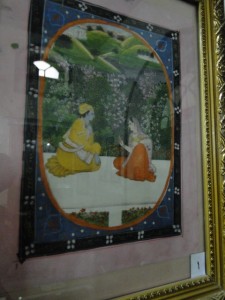
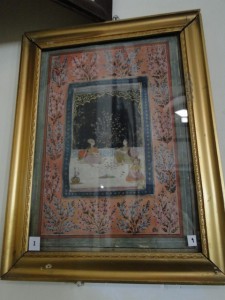

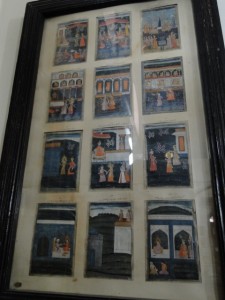
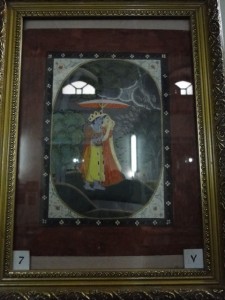

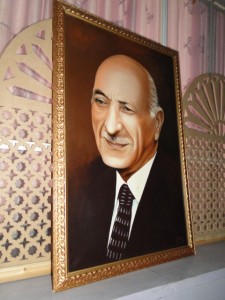

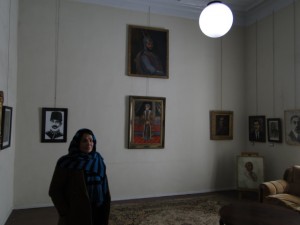
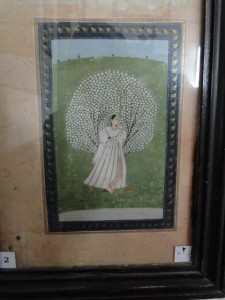
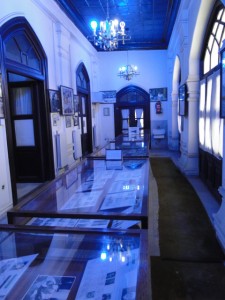
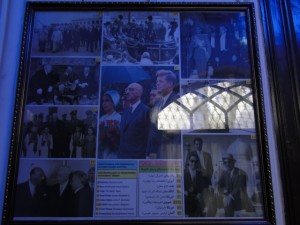

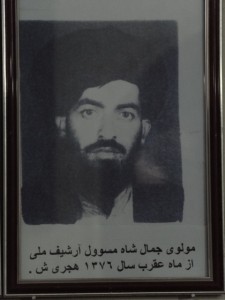
Have read your post with great interest.Am sure the readers will be pleased to read about the preserved documents in the archives.The role of Talibans in the destruction of Bamiyan statues is etched so strongly in my mind that i would need some other evidence to give them a clean chit. Thanks,however,for the interesting and detailed information about the library(your earlier post) and the archives.Regards.
Reading your posts on Afghanistan. The explanation about the destruction of Buddhas of Bamiyan is interesting. Recently, we heard about the burning of Qur’an. Have you got any reaction from the locals?
Last month, I read an interesting news where an Afghan calligrapher Mohammad
Sabir Khedri created the largest Qur’an in the world. He worked five years on the Quran in a bid to show the world that Afghanistan’s rich cultural heritage and traditions have been damaged, but not destroyed by 30 years of war.
Regards
I will be in Kabul in late April. One objective of the trip is to gather material for a book on the 1915-16 Hentig-Niedermayer expedition to Kabul. I would like to visit the National Archive and meet with Prof Sakhi Muneer during my stay. Could you please provide me with his contact details?
Thank you,
Jules Stewart